Vinicius C. Azevedo
LookingGlass: Generative Anamorphoses via Laplacian Pyramid Warping
Apr 11, 2025Abstract:Anamorphosis refers to a category of images that are intentionally distorted, making them unrecognizable when viewed directly. Their true form only reveals itself when seen from a specific viewpoint, which can be through some catadioptric device like a mirror or a lens. While the construction of these mathematical devices can be traced back to as early as the 17th century, they are only interpretable when viewed from a specific vantage point and tend to lose meaning when seen normally. In this paper, we revisit these famous optical illusions with a generative twist. With the help of latent rectified flow models, we propose a method to create anamorphic images that still retain a valid interpretation when viewed directly. To this end, we introduce Laplacian Pyramid Warping, a frequency-aware image warping technique key to generating high-quality visuals. Our work extends Visual Anagrams (arXiv:2311.17919) to latent space models and to a wider range of spatial transforms, enabling the creation of novel generative perceptual illusions.
How I Warped Your Noise: a Temporally-Correlated Noise Prior for Diffusion Models
Apr 03, 2025Abstract:Video editing and generation methods often rely on pre-trained image-based diffusion models. During the diffusion process, however, the reliance on rudimentary noise sampling techniques that do not preserve correlations present in subsequent frames of a video is detrimental to the quality of the results. This either produces high-frequency flickering, or texture-sticking artifacts that are not amenable to post-processing. With this in mind, we propose a novel method for preserving temporal correlations in a sequence of noise samples. This approach is materialized by a novel noise representation, dubbed $\int$-noise (integral noise), that reinterprets individual noise samples as a continuously integrated noise field: pixel values do not represent discrete values, but are rather the integral of an underlying infinite-resolution noise over the pixel area. Additionally, we propose a carefully tailored transport method that uses $\int$-noise to accurately advect noise samples over a sequence of frames, maximizing the correlation between different frames while also preserving the noise properties. Our results demonstrate that the proposed $\int$-noise can be used for a variety of tasks, such as video restoration, surrogate rendering, and conditional video generation. See https://warpyournoise.github.io/ for video results.
Lagrangian Neural Style Transfer for Fluids
May 02, 2020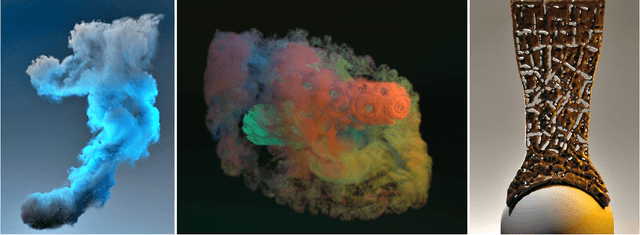

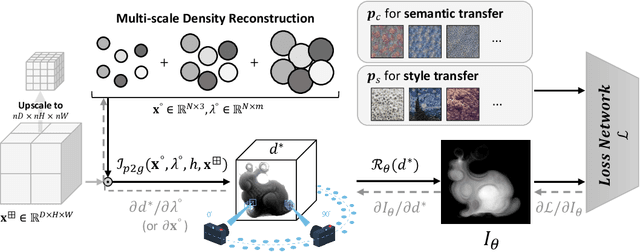
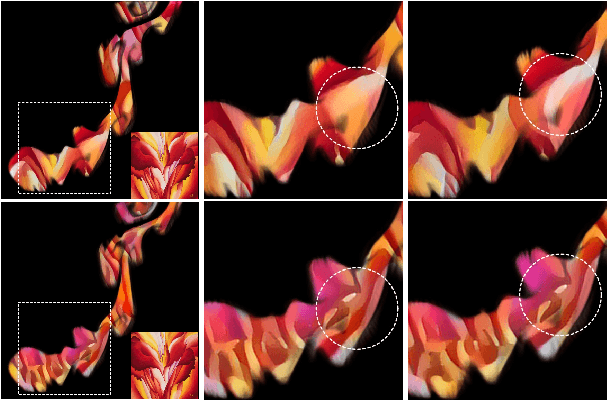
Abstract:Artistically controlling the shape, motion and appearance of fluid simulations pose major challenges in visual effects production. In this paper, we present a neural style transfer approach from images to 3D fluids formulated in a Lagrangian viewpoint. Using particles for style transfer has unique benefits compared to grid-based techniques. Attributes are stored on the particles and hence are trivially transported by the particle motion. This intrinsically ensures temporal consistency of the optimized stylized structure and notably improves the resulting quality. Simultaneously, the expensive, recursive alignment of stylization velocity fields of grid approaches is unnecessary, reducing the computation time to less than an hour and rendering neural flow stylization practical in production settings. Moreover, the Lagrangian representation improves artistic control as it allows for multi-fluid stylization and consistent color transfer from images, and the generality of the method enables stylization of smoke and liquids likewise.
* ACM Transaction on Graphics (SIGGRAPH 2020), additional materials: http://www.byungsoo.me/project/lnst/index.html
Latent Space Subdivision: Stable and Controllable Time Predictions for Fluid Flow
Mar 12, 2020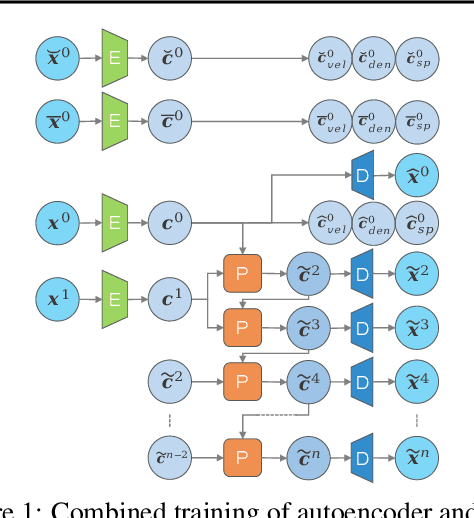
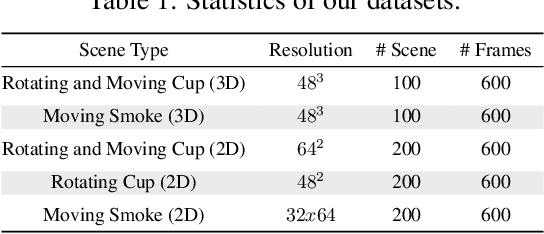

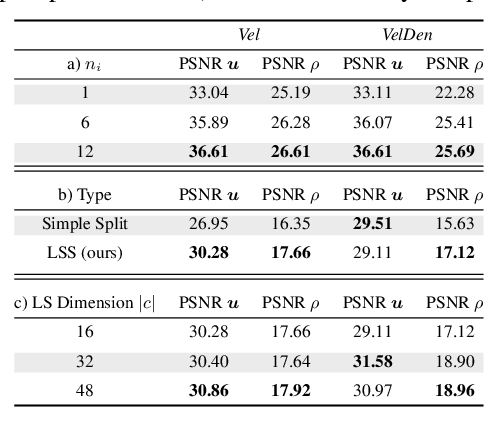
Abstract:We propose an end-to-end trained neural networkarchitecture to robustly predict the complex dynamics of fluid flows with high temporal stability. We focus on single-phase smoke simulations in 2D and 3D based on the incompressible Navier-Stokes (NS) equations, which are relevant for a wide range of practical problems. To achieve stable predictions for long-term flow sequences, a convolutional neural network (CNN) is trained for spatial compression in combination with a temporal prediction network that consists of stacked Long Short-Term Memory (LSTM) layers. Our core contribution is a novel latent space subdivision (LSS) to separate the respective input quantities into individual parts of the encoded latent space domain. This allows to distinctively alter the encoded quantities without interfering with the remaining latent space values and hence maximizes external control. By selectively overwriting parts of the predicted latent space points, our proposed method is capable to robustly predict long-term sequences of complex physics problems. In addition, we highlight the benefits of a recurrent training on the latent space creation, which is performed by the spatial compression network.
Frequency-Aware Reconstruction of Fluid Simulations with Generative Networks
Dec 18, 2019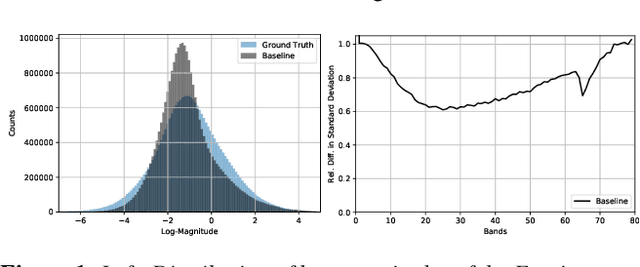
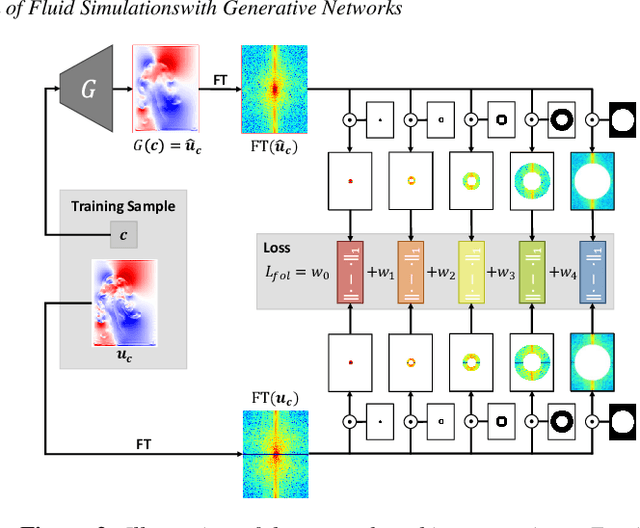
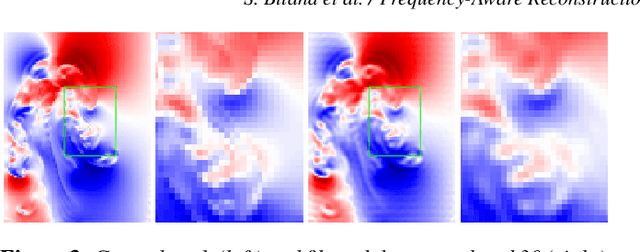
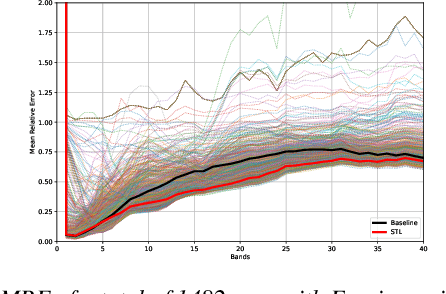
Abstract:Convolutional neural networks were recently employed to fully reconstruct fluid simulation data from a set of reduced parameters. However, since (de-)convolutions traditionally trained with supervised L1-loss functions do not discriminate between low and high frequencies in the data, the error is not minimized efficiently for higher bands. This directly correlates with the quality of the perceived results, since missing high frequency details are easily noticeable. In this paper, we analyze the reconstruction quality of generative networks and present a frequency-aware loss function that is able to focus on specific bands of the dataset during training time. We show that our approach improves reconstruction quality of fluid simulation data in mid-frequency bands, yielding perceptually better results while requiring comparable training time.
Transport-Based Neural Style Transfer for Smoke Simulations
May 17, 2019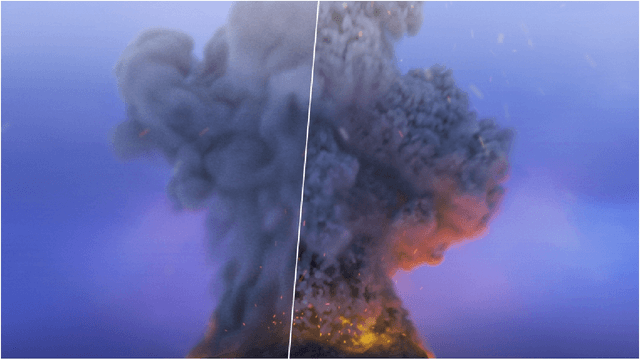
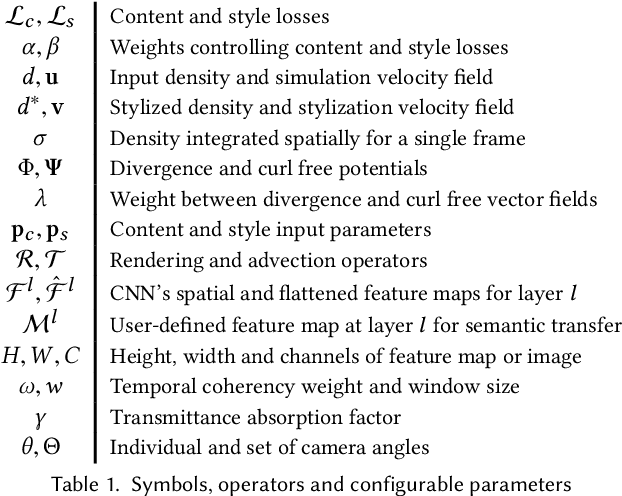
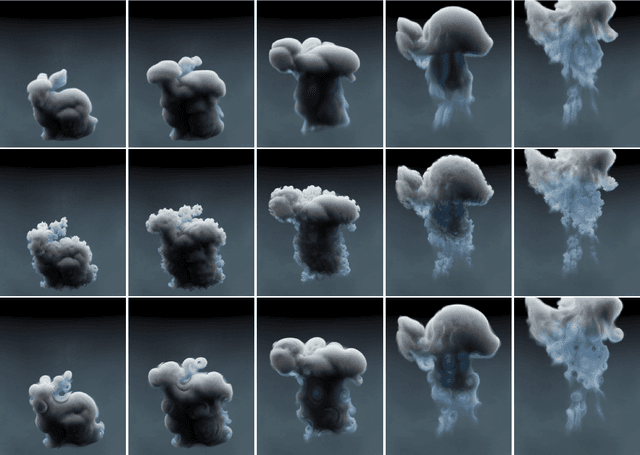

Abstract:Artistically controlling fluids has always been a challenging task. Optimization techniques rely on approximating simulation states towards target velocity or density field configurations, which are often handcrafted by artists to indirectly control smoke dynamics. Patch synthesis techniques transfer image textures or simulation features to a target flow field. However, these are either limited to adding structural patterns or augmenting coarse flows with turbulence structures, and hence cannot capture the full spectrum of different styles and semantically complex structures. In this paper, we propose the first transport-based Neural Style Transfer (TNST) algorithm for volumetric smoke data. Our method is able to transfer features from natural images to smoke simulations, enabling general content-aware manipulations ranging from simple patterns to intricate motifs. The proposed algorithm is physically inspired, since it computes the density transport from a source input smoke to a desired target configuration. Our transport-based approach allows direct control over the divergence of the stylization velocity field by optimizing divergence and curl-free potentials that transport smoke towards stylization. Temporal consistency is ensured by transporting and aligning subsequent stylized velocities, and 3D reconstructions are computed by seamlessly merging stylizations from different camera viewpoints.
Deep Fluids: A Generative Network for Parameterized Fluid Simulations
Jun 06, 2018
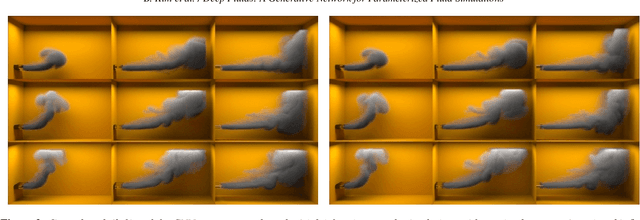
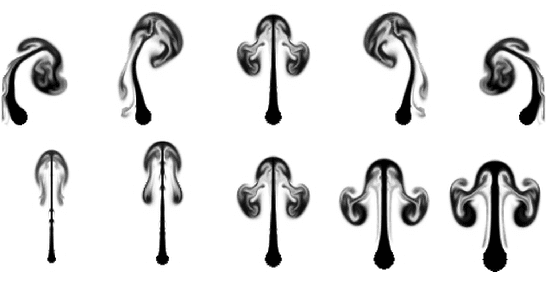
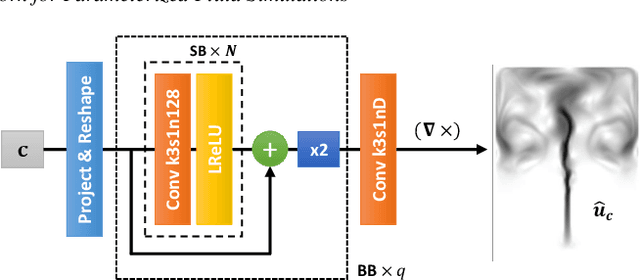
Abstract:This paper presents a novel generative model to synthesize fluid simulations from a set of reduced parameters. A convolutional neural network is trained on a collection of discrete, parameterizable fluid simulation velocity fields. Due to the capability of deep learning architectures to learn representative features of the data, our generative model is able to accurately approximate the training data set, while providing plausible interpolated in-betweens. The proposed generative model is optimized for fluids by a novel loss function that guarantees divergence-free velocity fields at all times. In addition, we demonstrate that we can handle complex parameterizations in reduced spaces, and advance simulations in time by integrating in the latent space with a second network. Our method models a wide variety of fluid behaviors, thus enabling applications such as fast construction of simulations, interpolation of fluids with different parameters, time re-sampling, latent space simulations, and compression of fluid simulation data. Reconstructed velocity fields are generated up to 700x faster than traditional CPU solvers, while achieving compression rates of over 1300x.
 Add to Chrome
Add to Chrome Add to Firefox
Add to Firefox Add to Edge
Add to Edge